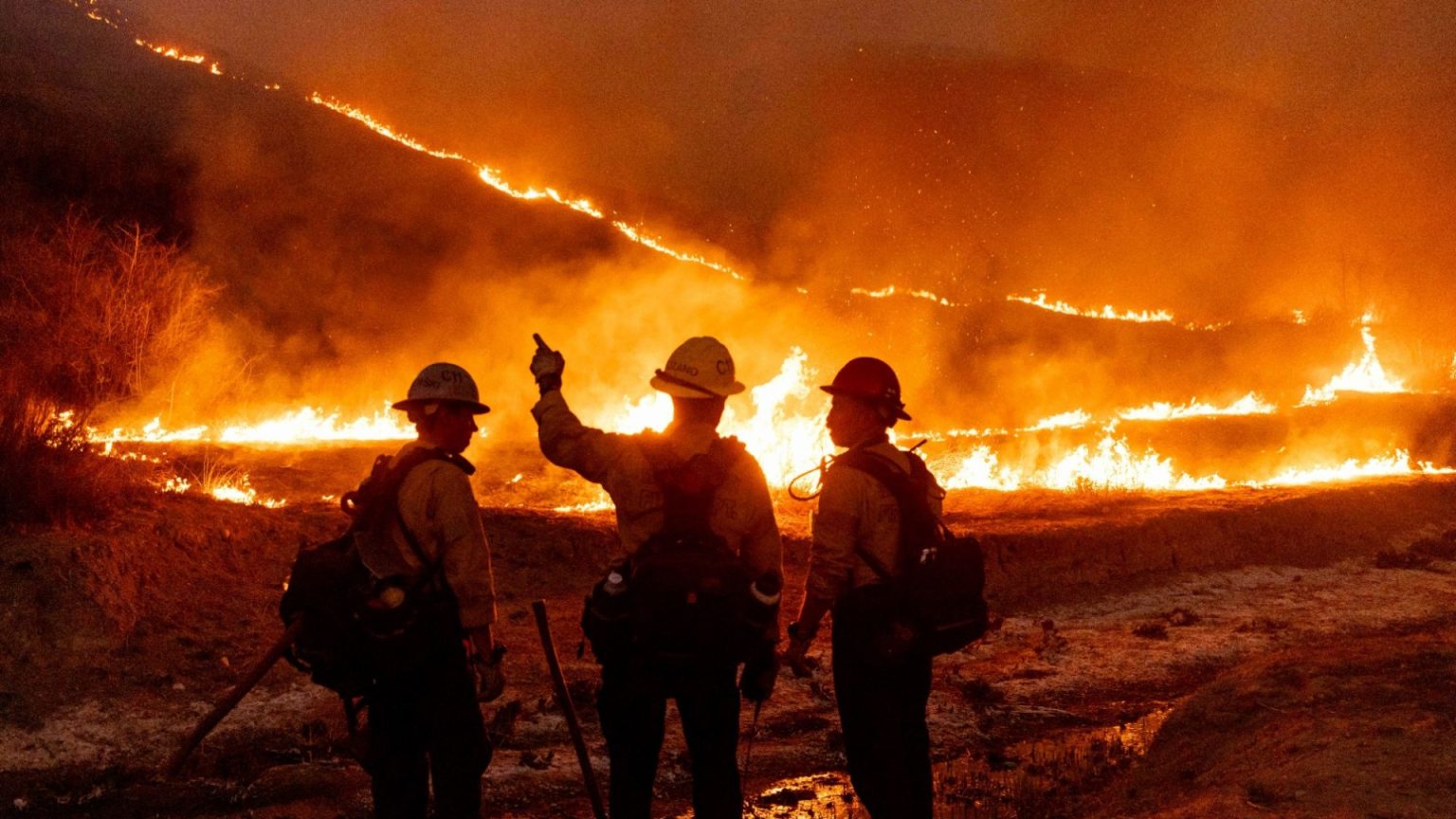The city of Los Angeles is facing a critical wildfire crisis, with the potential for “explosive fire growth” in the coming days due to anticipated high winds. Three major wildfires – the Palisades, Eaton, and Hurst fires – remain largely uncontained, covering tens of thousands of acres and forcing over 100,000 residents to evacuate. Firefighters are battling tirelessly against the flames, aided by thousands of National Guard troops and other support personnel. The strong, unpredictable winds are expected to push the fires southward and westward, threatening affluent neighborhoods like Brentwood and potentially even the densely populated San Fernando Valley. The precarious situation has prompted dire warnings from officials, emphasizing the ongoing danger and the potential for further devastation.
Brentwood, a celebrity enclave known for its luxurious homes, is now under immediate evacuation orders as the fires advance. The potential for rapid fire spread, driven by the anticipated high winds, poses a significant threat to the area. The San Fernando Valley, a major hub for the film industry and home to millions of residents, is also at risk if the fires continue their westward trajectory. The combination of dry conditions, strong winds, and the sheer scale of the existing fires creates a volatile and unpredictable situation, raising concerns about the potential for further loss of life and property.
The ongoing wildfires have already claimed the lives of at least 16 people, with another 16 still missing. The death toll is feared to rise as search and rescue efforts continue amidst the devastation. Tragic stories of loss are emerging, including the death of a former child actor trapped in a Malibu cottage, a great-grandfather and his son who perished together in their Altadena home, and an elderly man who refused to evacuate and tragically lost his life. Each individual story underscores the human cost of these devastating fires.
The scale of the disaster is staggering, with whole blocks of homes reduced to rubble in some areas. Local officials have described the scenes as resembling “warzones,” highlighting the immense destruction caused by the fires. The financial cost is expected to be enormous, potentially making this one of the worst natural disasters in U.S. history. The sheer size and intensity of the fires, combined with the difficult terrain and unpredictable weather conditions, pose an immense challenge for firefighters and emergency responders.
Beyond the immediate threat to homes and lives, the wildfires also present other dangers. Los Angeles authorities have issued a “do not drink” advisory for tap water in certain areas near the Palisades fire due to potential contamination from fire-related chemicals. This further complicates the situation for residents already facing displacement and uncertainty. The combination of fire, smoke, and potential water contamination creates a multi-faceted emergency for the affected communities.
The response to the wildfires has been substantial, with thousands of firefighters, National Guard troops, and other support personnel deployed to battle the flames. Aircraft are being used to drop water and fire retardant in an effort to contain the spread of the fires. Offers of assistance have even come from international sources, such as Ukraine’s president, who has pledged to send firefighters to aid in the effort. The mobilization of resources underscores the severity of the situation and the collective determination to combat the devastating wildfires.




